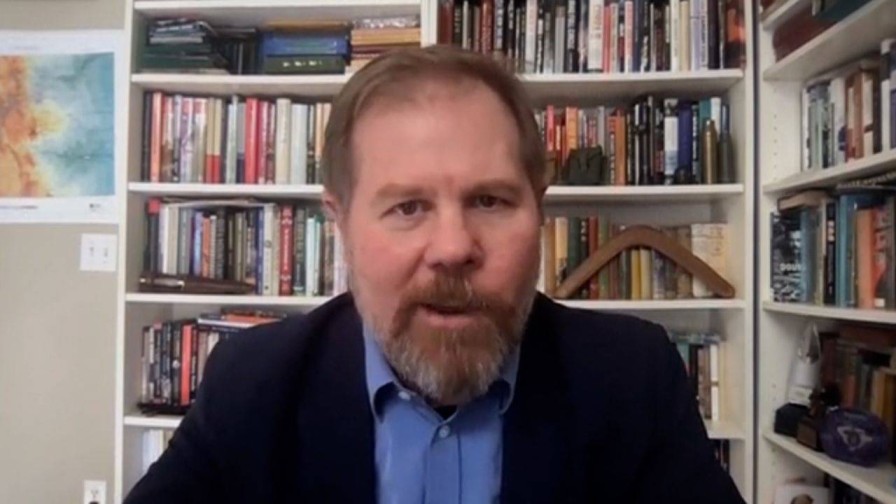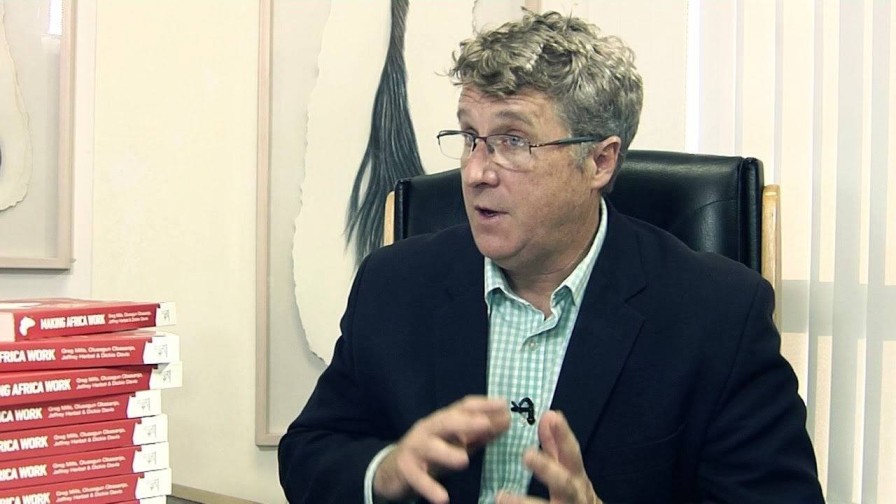Keeping the peace is harder than fighting the war
Military historians analyse the future of conflict in the 21st century
The Art of War and Peace: The changing face of 21st-century warfare, by David Kilcullen and Greg Mills.
Military historians analyse the future of conflict in the 21st century
The Art of War and Peace: The changing face of 21st-century warfare, by David Kilcullen and Greg Mills.
The Greek historian Thucydides is the starting point for any analysis of war and political realism. His History of the Peloponnesian War, written in the fourth century BC, recounts a fictionalised debate between the Athenians and the Melians, a small neutral island community.
The powerful empire of Athens demanded the submission of Melos or face the consequences. The Melians refuse. Athens besieges the island, eventually conquers it, kills the men, and enslaves the women and children.
"The strong do what they can and the weak suffer what they must," Thucydides wrote in one of his most famous quotes. In another, he said his writing was not “to meet the taste of an immediate public but was done to last forever”.
Australia’s most eminent (and oldest) historian, Geoffrey Blainey, last week took up the theme in the latest edition of The Causes of War, first published in 1973 and based on lectures he gave at the University of Melbourne at the height of the Vietnam War.
The lectures were requested by anti-war students. He agreed on the condition that he would address every war except Vietnam. Blainey, now 95, intended the book to be a study of ideas by previous writers on war and to hold their theories to the test of evidence. In a review of conflicts since 1700, he found that most accounts by historians and pundits did not stand up to scrutiny.
One reviewer cited the above quote from Thucydides – that it was not written “to meet the taste of an immediate public” – to affirm that Blainey was not out to placate or criticise those involved in the debate over Vietnam.
This remains wise counsel when considering the two wars that dominate today’s political discourse – Israel-Gaza and Russia-Ukraine. History is still unfolding and will, in time, judge the actions of the main participants.
However, I am not reviewing Blainey’s long look back, but a more topical one, The Art of War and Peace, by David Kilcullen and Greg Mills. Kilcullen is a perceptive analyst of warfare and international affairs with a background as an officer in the Australian Army.

David Kilcullen.
He was a policy adviser to US General David Petraeus and US Secretary of State Condoleezza Rice on Iraq and Afghanistan. His most recent academic post is professor of international and political studies at UNSW Canberra. He is a regular contributor to The Australian.
Greg Mills is a South African who is a fellow of the Royal United Services Institute in London. He has worked as a policy analyst in Afghanistan, Colombia, and Africa, where he is a strategy adviser to the president of Zambia. Both jointly wrote The Ledger (2021) on the failure of Western military intervention in Afghanistan.

Greg Mills.
Their qualifications, personal experience in conflict situations, and previously published works guarantee an authoritative exercise in a study of 21st-century warfare. A book cannot keep up with the fast-moving events of the past few months, but it does provide an informed perspective from which to understand the present.
Media coverage of these two conflicts provides plenty of distraction and therefore ill-informed commentary. Kilcullen had redressed this with topical op-eds on both, combining a focus on the military effort involved but holding back on political judgments.
Peace-making, as the book emphatically states, is much harder than starting a war. Since World War II, nearly half of the countries that have ended a civil war resort to conflict soon afterwards. Apart from Gaza and Ukraine, the most intractable example today is Sudan. Arguably, it’s a much greater humanitarian disaster, though it rarely figures in headlines due to the lack of involvement by Western powers.
The authors’ deep knowledge and long-distance view enable them to make some judgments that put the daily headlines in perspective. The most worrying, and the one with the greatest urgency, is their comparison to Europe in 1938. Critical to this is the direct link between the fall of Kabul in 2021 and the Russian invasion of Ukraine six months later.

Western forces evacuate from Kabul in 2021.
“The West’s abandonment of the Afghans … and the failure to deter Russia … have, wittingly or not, allowed an axis of Russia, China, and Iran to coalesce, less because of ideological compatibility … than because of shared grievances and mutual interests,” the authors state.
This observation was made before the recent “12-day war” against Iran, which may have removed one of the three legs from this stool of world power. A possible replacement is North Korea through its contribution to Russia’s war effort.
Kilcullen has since written on the implications of Iran’s setback for a renewed Western resistance to the authoritarian axis. He notes Israel’s (and Ukraine’s) use of “unconventional strategic strikes” that had been long in the planning and hit the enemy well behind the lines.
Operation Rising Lion against Iran required establishing weapons and drones near air defence targets and destroying them in coordination with an unimpeded aerial bombing attack. Ukraine’s Operation Spider’s Web involved drones disabling bombers thousands of kilometres inside Russia, while in 2024, Israel wiped out a network of Hezbollah activists in Lebanon with ingenious electronic pager and handheld radio explosions.
These were signs of hope for the West in a world where China’s military buildup against Taiwan continues unabated despite the failure of Russia’s ambitions to seize control of Ukraine. This conflict has dramatically changed the nature of conventional warfare, with its use of robotics, advanced surveillance technology, AI (artificial intelligence), and cyberwarfare.
This has enabled a smaller and less-powerful force to stall the advance of a much greater one through better use of limited resources as well as the human qualities of leadership, determination, and sheer grit.
But The Art of War and Peace is much more than a guide to tactics and strategy. It is also rich in details of the peace process, as practised in countries as diverse as Angola, Ethiopia. Iraq, Liberia, and Zimbabwe. These examples focus on the emergence of alternative leadership after the shooting stops.
Western readers may prefer lessons from 1938, the year when appeasement of Hitler underlined a policy of avoiding war at all costs. However, the upside was that it gave Britain breathing space to build its strength in preparation for an eventual showdown.

UK Prime Minister Neville Chamberlain signed the Munich Agreement with Hitler in 1938.
Playing for time meant avoiding a major defeat in establishing sufficient deterrence to curb or defeat the aggressive power. The authors argue that responding to current threats requires leadership committed to resilience and reliability – qualities they say have been missing in the West.
They also suggest the need for greater self-reliance on the part of smaller states to reduce their dependence on greater powers, which may be less reliable in pursuing their interests. Those issues are being played out again some 80 years after the end of World War II.
It remains to be seen whether the lessons from the West’s previous failures, such as Iraq and Afghanistan, will apply to Ukraine, the future of Taiwan, or the wider world, where conflicts are rooted less in imperial expansion than in tribal loyalties, criminal cartels, and control of natural resources.
Simple answers are not required in resolving conflicts and restoring peace. This densely researched book is not an easy read, but the effort is rewarded by applying its insights to the headlines and seeing whether they accord with what has worked in the past.
The Art of War and Peace: The changing face of 21st-century warfare, by David Kilcullen and Greg Mills (Ithaka Press).
Nevil Gibson is a former editor-at-large for NBR.
Sign up to get the latest stories and insights delivered to your inbox – free, every day.